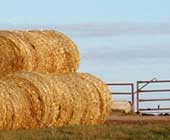FUEL STANDARD / SPECIFICATION
Recommended Wood Fuel Specifications, PA Fuels for Schools and Communities
Approved for release, January, 2015
Purpose:
The purpose of this specification is to provide guidance to fuel users and manufacturers as they establish and operate wood energy projects. This specification was developed by manufacturers and end users of commercial wood heat systems, and is suitable for most facilities. Continued iInput from suppliers, industry, and end users is encouraged.
| Wood Species or Type | >90% hardwood "virgin wood" only |
| Moisture Content (% by mass, wet basis) | No greater than 50% |
| Energy Value (as received, BTU/lb HHV) | >5,000 |
| Smallest Wood Particle Size | 0.25" (max dimension), no sander dust or wood flour |
| Largest Wood Particle Size | not to exceed 3" x 3" x 1/2" |
| Bark, Leaves, Twigs, etc? | No |
| Percent "Overs" (oversized material, % by mass) | Not to exceed 1% |
| Ash Content (% by mass) | Not to exceed 3% |
| Sustainability Metric | Follow BMPs for sustainable management practices |
| Wood Species or Type | >90% hardwood "virgin wood" only |
| Moisture Content (% by mass, wet basis) | No greater than 50% |
| Energy Value (as received, BTU/lb HHV) | >5,000 |
| Smallest Wood Particle Size | 0.25" (max dimension), no sander dust or wood flour |
| Largest Wood Particle Size | not to exceed 3" x 3" x 1" |
| Bark, Leaves, Twigs, etc? | Yes |
| Percent "Overs" (oversized material, % by mass) | Not to exceed 1% |
| Ash Content (% by mass) | Not to exceed 3% |
| Sustainability Metric | Follow BMPs for sustainable management practices |
| Wood Species or Type | hardwood or softwood, "virgin wood" only |
| Moisture Content (% by mass, wet basis) | No greater than 50% |
| Energy Value (as received, BTU/lb HHV) | >4,500 |
| Smallest Wood Particle Size | 0.25" (max dimension), no sander dust or wood flour |
| Largest Wood Particle Size | not to exceed 3" x 3" x 1/2" |
| Bark, Leaves, Twigs, etc? | No |
| Percent "Overs" (oversized material, % by mass) | Not to exceed 1% |
| Ash Content (% by mass) | Not to exceed 5% |
| Sustainability Metric | Follow BMPs for sustainable management practices |
Notes:
- For the purposes of these specifications, "hardwood" refers to higher density species of hardwoods such as oak and maple, rather than aspen, poplar, etc.
- Fuels must not contain any dirt rocks or debris
- Fuels must not contain any paint, glue, chemical treatments, or other manufactured or hazardous materials (no Construction/Demolition Waste)
- Moisture Content is measured on a "wet basis", i.e. MC = 100 * (wet mass - dry mass) / wet mass
- HHV denotes "higher heat value", and is on an "as received" or "per wet mass" basis.
- "first-use wood" (also known as "virgin wood") refers to harvested wood fuel that has not first been used for construction, lumber, pallets, or other primary purposes.


